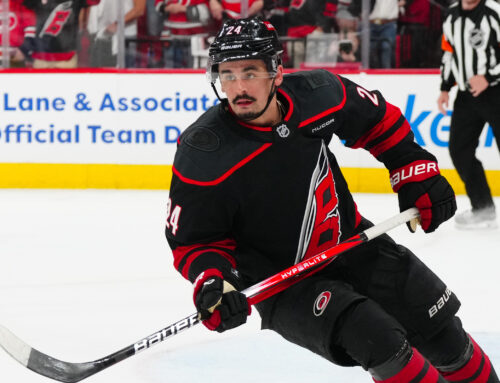This week's Eastern Edge is the fourth part of a series looking at how players performed in new surroundings this season. We'll discuss players that joined new teams ahead of the 2021-2022 regular season, as well as those that were traded during the campaign. The earlier parts of the series can be viewed here.
In his first season with the Canadiens, Dvorak posted 33 points in 56 games – a 48-point pace. He scored at a similar rate in each of his final two seasons as a Coyote, so this year's offensive output wasn't anything out of the ordinary. Although Dvorak met expectations in terms of point production, Habs fans would likely classify his first season with the team as a disappointment. He was brought in to replace one of the league's best two-way centers in Phillip Danault, who left Montreal during the offseason and took his elite defensive talent to LA, managing a career-high 27 goals with the Kings this year. Dvorak was never going to fill the void that Danault left, but it was disappointing to see the former Coyote skating slow and looking lost at many points this season.
In hindsight, it's possible that Dvorak looked out of place early on because he started the season under coach Dominique Ducharme, who implemented overcomplicated strategies that most of the team didn't really understand. Dvorak looked much more comfortable and managed to produce more offense once Martin St. Louis took over as bench boss. Under Ducharme, Dvorak posted 16 points in 34 games (0.47 points per game), but under St. Louis, Dvorak tallied 17 points in 22 games (0.77 points per game). It's interesting that Dvorak's offensive game took off under St. Louis, who gave him more of a defensive role at even strength. Under Ducharme, Dvorak started 47% of his shifts in the offensive zone (via NaturalStatTrick), but under St. Louis, Dvorak's offensive zone start percentage was just 35% (via NaturalStatTrick).
It's also worth noting that Dvorak saw a greater share of the team's total power-play time under MSL (59%) than he did under Ducharme (48%) but was less productive under MSL (one PPP in 22 games vs. four PPPs in 34 games). St. Louis liked using Dvorak on the power play because he's one of the league's best face-off takers and could secure possession off puck drop. Nick Suzuki has improved in the face-off dot and should take another step forward next year, but I anticipate Dvorak will still be the team's best face-off taker and will likely have a role on the power play again next season. Although I'm optimistic that Dvorak will benefit from a full season under MSL next year, I wouldn't expect a significant increase in point production given the magnitude of his defensive responsibilities.
Dougie Hamilton
Expectations were high for the 28-year-old defenseman this season after he signed a massive seven-year, $63-million deal with the Devils. Hamilton certainly earned the lucrative contract with his solid two-way play, pacing for 70 points and 63 points in his final two seasons with the Hurricanes. Unfortunately, he fell short of expectations in his first year with the Devils, posting 30 points through 62 appearances, which translates to 40 points over 82 games.
To better understand the reduction in his production, it's important to note that Hamilton broke his jaw, as well as a toe, in early January. He had jaw surgery and returned to the lineup after a two-month absence, but his toe wasn't fully healed, so he was playing injured down the stretch. He had 20 points in 30 appearances before getting injured, averaging 3.60 shots per game. After recovering from jaw surgery, he tallied just 10 points over 32 outings, putting up 2.78 shots per game. Although Hamilton held a prominent power-play role and posted seven PPPs prior to the injuries, Damon Severson took his spot on the top unit and held onto that role down the stretch. Hamilton was no longer the go-to guy on the man advantage and posted just one power-play point post-injury. Now that we know he was dealing with a broken toe, it may explain why he didn't see a greater power-play role in those final 32 games. What previously seemed like a poor coaching decision that could carry into next year, now seems like asset protection that's unlikely to continue next year, as long as Hamilton can return to full health during the offseason.
The Devils have one of the league's most promising young offenses, headlined by Jack Hughes and Jesper Bratt. Hamilton is surrounded by a great deal of talent in New Jersey, and I have no doubt he'll rebound next year as he returns to full health and reclaims his regular role. Some may be underwhelmed by his overall numbers and let him fall in next year's fantasy drafts, but that just means you'll have the opportunity to acquire him at a discounted rate. Keep in mind he was on pace for 55 points before getting injured. As a high-volume shooter with great power-play upside, he can be one of the most valuable defensemen in fantasy leagues.





 PHI
PHI ANA
ANA VAN
VAN DET
DET BUF
BUF NYR
NYR MIN
MIN
